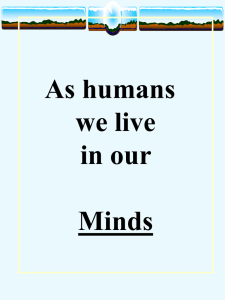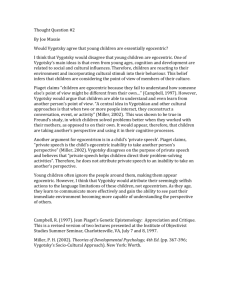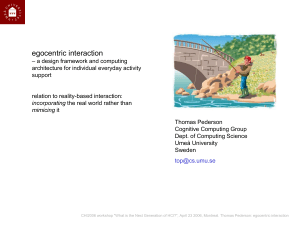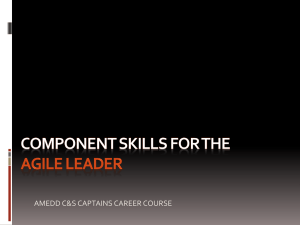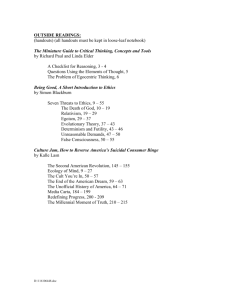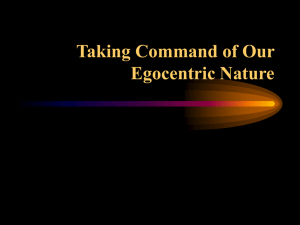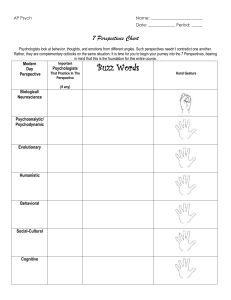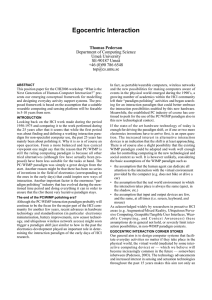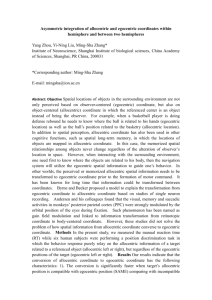Egocentrism - SHANTI Pages
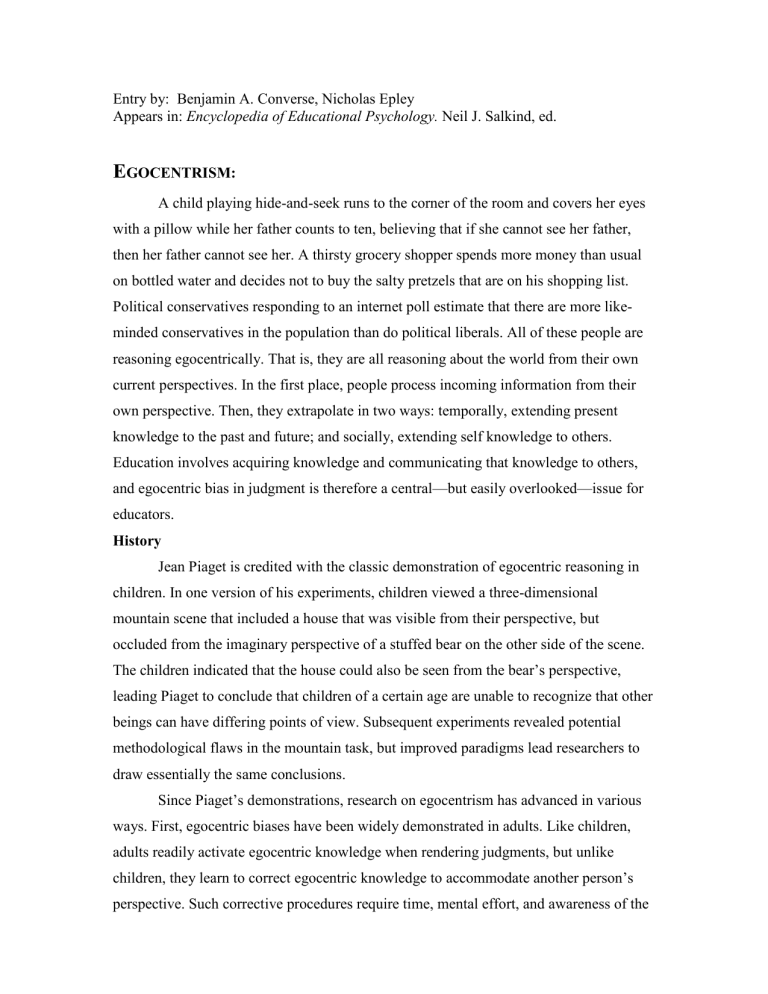
Entry by: Benjamin A. Converse, Nicholas Epley
Appears in: Encyclopedia of Educational Psychology. Neil J. Salkind, ed.
E
GOCENTRISM:
A child playing hide-and-seek runs to the corner of the room and covers her eyes with a pillow while her father counts to ten, believing that if she cannot see her father, then her father cannot see her. A thirsty grocery shopper spends more money than usual on bottled water and decides not to buy the salty pretzels that are on his shopping list.
Political conservatives responding to an internet poll estimate that there are more likeminded conservatives in the population than do political liberals. All of these people are reasoning egocentrically. That is, they are all reasoning about the world from their own current perspectives. In the first place, people process incoming information from their own perspective. Then, they extrapolate in two ways: temporally, extending present knowledge to the past and future; and socially, extending self knowledge to others.
Education involves acquiring knowledge and communicating that knowledge to others, and egocentric bias in judgment is therefore a central—but easily overlooked—issue for educators.
History
Jean Piaget is credited with the classic demonstration of egocentric reasoning in children. In one version of his experiments, children viewed a three-dimensional mountain scene that included a house that was visible from their perspective, but occluded from the imaginary perspective of a stuffed bear on the other side of the scene.
The children indicated that the house could also be seen from the bear’s perspective, leading Piaget to conclude that children of a certain age are unable to recognize that other beings can have differing points of view. Subsequent experiments revealed potential methodological flaws in the mountain task, but improved paradigms lead researchers to draw essentially the same conclusions.
Since Piaget’s demonstrations, research on egocentrism has advanced in various ways. First, egocentric biases have been widely demonstrated in adults. Like children, adults readily activate egocentric knowledge when rendering judgments, but unlike children, they learn to correct egocentric knowledge to accommodate another person’s perspective. Such corrective procedures require time, mental effort, and awareness of the
need to correct. Insufficient correction is a common cause of egocentric biases in judgments among adults. Second, research on egocentric biases has expanded beyond visual perspective to incorporate perspectives based on knowledge, experience, culture, attitudes, and mood.
Consequences of egocentrism
Egocentric reasoning can occur in at least three stages of processing and can, in turn, have consequences for both acquiring and communicating knowledge.
First, people must make sense of their environment by forming representations based on their perceptions. With visual information, for example, people are generally good at forming three dimensional representations based on their own singular perspectives, and inferring others’ perspectives from this. Consequences may emerge, however, when they neglect to consider others’ perspectives simultaneously. This can be illustrated by the presenter who repeatedly points at his own computer monitor, visible only to him, rather than gesturing toward the projection of this image, which is visible to the entire audience.
Second, people understand the past and the future according to their current perspectives. For example, people often use their current knowledge when judging the past. This leads to the logic referenced by aphorisms such as “hindsight is 20/20.” When judging past decisions made under uncertainty, people will often rely on the outcome without appreciating that the outcome could not have been known at the time of the decision.
Finally, people think about others using their own perspective. This leads people to exaggerate the extent to which others share their beliefs, knowledge, and opinions. It also causes communication difficulties when speakers mistakenly assume that a listener shares one’s knowledge when, in fact, they do not.
Importance for education
Given the interpersonal nature of education, educators are at particular risk of many of the biases associated with the egocentric perception of other people. At least three potential difficulties can be identified, including motivating students, preparing lessons, and delivering information.
The tendency to exaggerate the extent to which others share one’s beliefs and values, “the false consensus effect” to psychologists, can make it difficult for educators to
understand what will motivate their students. A teacher who imputes his own preferences and values to students may be trying to motivate them with the wrong incentives.
An inherent difficulty for educators, who know the material they are trying to present, is to get beyond their own perspective to appreciate the perspective of students who do not know the material. Insufficient correction can cause teachers to overestimate how easy it is for students to learn the material, and to overestimate the extent to which information has been clearly communicated—a problem psychologists call the “curse of knowledge.” A math instructor writing a proof on the board might skip a number of steps because she assumes knowledge of algebra beyond the students’ understanding. This can lead to confused students and a frustrated instructor.
Finally, effective communication requires instructors to be precise in language and clear in intentions to avoid ambiguities in the first place, and to engage in perspective taking to resolve ambiguities that do arise. Psychologists have not yet uncovered a communication panacea, but a general awareness of potential pitfalls should be a valuable step toward more effective communication.
Given that people necessarily reason about the world from their own perspective, it is difficult to overcome egocentrism. A primary challenge for those in educational practice and research is to recognize the implications of this processing orientation, to diagnose it when it occurs, and to implement practices that help to overcome or circumvent negative consequences.
See also : Theory of Mind, Piaget’s Theory of Cognitive Development
Further reading:
E. B. Royzman, K.W. Cassidy, and J. Baron, "I Know, You Know: Epistemic
Egocentrism in Children and Adults," Review of General Psychology, 7, 38-65
(2003).
Nickerson, R. S. (1999). How we know—and sometimes misjudge—what others know:
Imputing one’s own knowledge to others. Psychological Bulletin, 125, 737–759.
